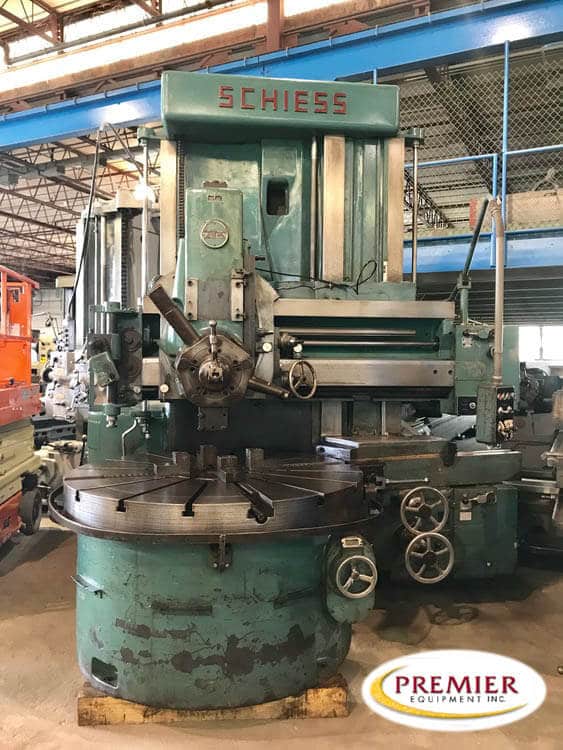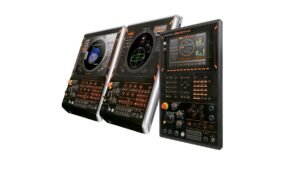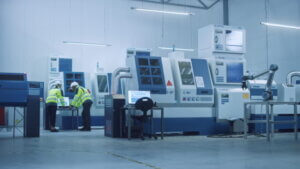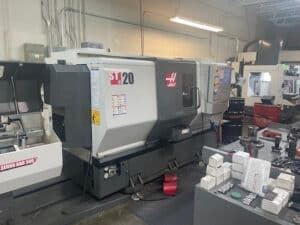Thanks to technology, CNC operators are able to more efficiently achieve project completion through combining surface finishing with other machining functions. The benefits of these simultaneous operations are reducing off-line finishing costs and time, faster cycle times and improved product quality. Whether new or used CNC machines, operators and shops are increasingly looking to integrate abrasive finishing tools into the tool holding systems or CNC machine carousels. There is, however, some debate over the use of abrasive materials.
The Concern With Abrasive Finishing Tools
The leading concern with the use of abrasives is the potential for damage to the expensive CNC machine. Abrasives are often lumped into one category, with the common thought leading to things like sandpaper where extensive amounts of debris and grip are released during the tooling process. The fear is that a buildup of these particles and materials could clog the coolant lines or create damage to any exposed bearings or slides. However, there are differences to be noted between abrasive finishing tools and the abrasives that are used to produce aggressive material removal.
Unlike true abrasives such as sandpaper, the finishing tools used on a CNC machine produce very little grit (if any at all) and it is similar in nature to the metal chips or grinding dust that is regularly produced during machine tool operations. Even if trace amounts of fine solids were products, there is virtually no difference between the filtration requirements for machining and abrasive tool use.
The Cleanup of Particulate
Whatever particle is released during finishing applications can be removed by using a cartridge filtration system or an inexpensive bag filtration system. The most cost-effective option to achieve high clarity levels with end-user functions is a pressure filter or disposable media vacuum filter. For those who are concentrating on fine honing work, a cartridge filter or 20-micron bag should catch the fine solids while providing ample protection for the sump pump and tool. It will also keep clogs from developing in the coolant ports.
Though some may worry about the costs of additional filtration measures on their used CNC machine for application using abrasive tools, these concerns shouldn’t carry much weight given the filtration system that must be used for taking particulate out any coolant generated throughout the machining process. Few operators and factories have encountered problems with the cutting fluids directly related to the use of abrasives. Even those who have not incorporated abrasives into their process are still susceptible to particulate entering their machine. Carbide can flake off from worn-out cutting tools and find its way into the coolant.
The Use of Abrasives
One of the more well-known abrasives is the NamPower abrasive disc brush. It is uniquely crafted from a combination of silicon carbide and ceramic. It contains a fiber-reinforced thermoplastic base when flexible yet abrasive nylon filaments are bonded tightly. The movement of these filaments works like a flexible file, being able to form to the intricate contours of a part, file across the various edges or surfaces and wipe the surface to help enhance the finish while maximizing burr removal. The disc brush can also be used for rust removal, part cleaning and edge blending.
While an abrasive grit is used in the finishing process, the brush (from the perspective of being abrasive) poses little threat to the integrity of the CNC machine or tooling and finishing processes. The brush is self-sharpening, as the linear design has new grains constantly coming into contact with the work surface that will get sheared off during the process to expose fresh cutting particles.
The Flex-Hone is another tool commonly added to the carousel and used for finishing work. It is used for surface finishing and cross-hole deburring. It is constructed using flexible filaments to which small, abrasive globules are attached. This tool can access areas that are hard to reach, like slots, grooves, undercuts or internal holes. Thorough finishing will prevent sharp edges or burrs from creating turbulence or blockages that impact the flow of gases, lubricants or fluids. Users find minimal to zero dust or grit released during this process.
The Future of CNC Applications
As the myths surrounding finishing tools continue to be debunked, more machine tool shops and operators will start to take advantage of the benefits they bring. Efficiency and quality results are positive additions to the tooling process.



